The flag of Nepal distinguishes itself on the global stage with its non-quadrilateral, double-pennant shape, a notable departure from traditional flag designs. This distinctive form is not just a matter of aesthetics but reflects Nepal’s deep cultural roots and historical narrative and symbolizes Nepal’s uniqueness and resilience.
Flag of Nepal
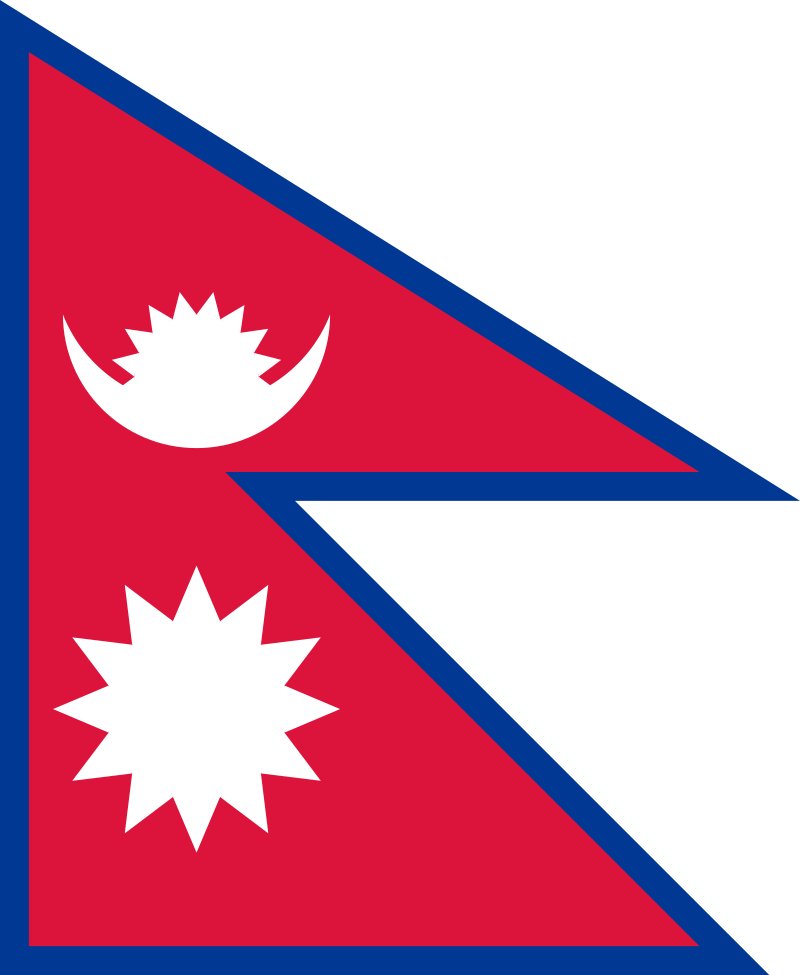
The flag of Nepal stands out with its unique non-rectangular shape featuring two stacked triangles. This double-pennant design symbolizes the nation’s connection to the Himalayas. At the center of each triangle are distinct symbols: a white crescent moon in the upper part and a white twelve-pointed sun in the lower.
These elements represent the enduring nature of Nepal and its aspirations. The flag’s overall design reflects Nepal’s rich cultural heritage and its distinct place in the world.
Flag of Nepal: Color Palette
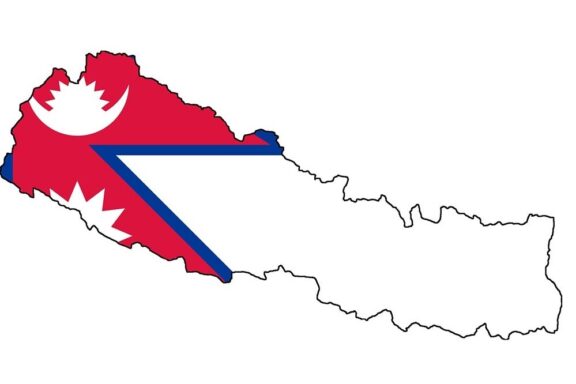
Nepal Flag Emoji: 🇳🇵
The color palette of Nepal’s flag, composed of crimson red and deep blue, is striking and meaningful. These colors are more than mere design choices; they embody significant aspects of Nepal’s national identity and cultural values.
Each hue on the flag carries its own story and symbolism, which will be explored in the following segment, highlighting their importance in representing the nation’s character and ethos.
Meaning of Each Color
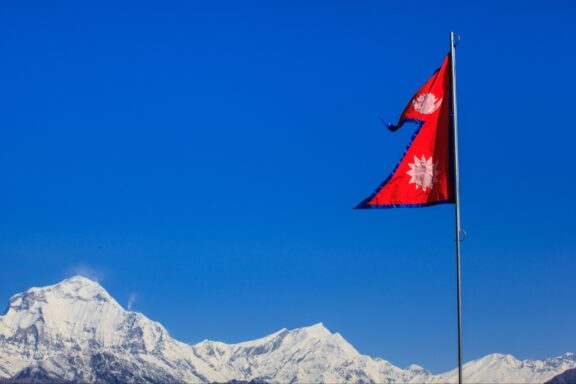
Crimson Red
Crimson red, the dominant color in Nepal’s flag, is steeped in historical and cultural significance. It symbolizes the bravery and strength of the Nepalese people, reflecting their spirit and resilience.
This color also resonates with Nepal’s natural beauty, as it represents the rhododendron, the national flower of Nepal.
Blue
The deep blue border encircling Nepal’s flag symbolizes peace and harmony. This color choice is deeply rooted in Nepalese tradition, often found in the nation’s arts and decorations.
The blue border serves as a visual reminder of the values of tranquility and unity, fundamental to the Nepalese way of life. It contrasts with the vibrant red, encapsulating the balance between the vigor of the Nepalese spirit and their commitment to peace.
White (Symbols)
The symbols on Nepal’s flag, the white sun and moon, are more than decorative; they embody deep meanings and reflect the nation’s cultural and environmental diversity.
- White Sun: Symbolizes the Nepalese people’s vitality and fierce determination, representing the southern lowlands’ warmth.
- White Moon: Represents the Nepalese people’s serenity and purity, reflecting the Himalayas’ cooler climate.
Nepal’s Coat of Arms
The Coat of Arms of Nepa is a profound emblem reflecting the nation’s sovereignty, cultural values, and geographical diversity. It artistically combines symbols and colors to portray the essence of Nepal, conveying both historical significance and contemporary national ethos.
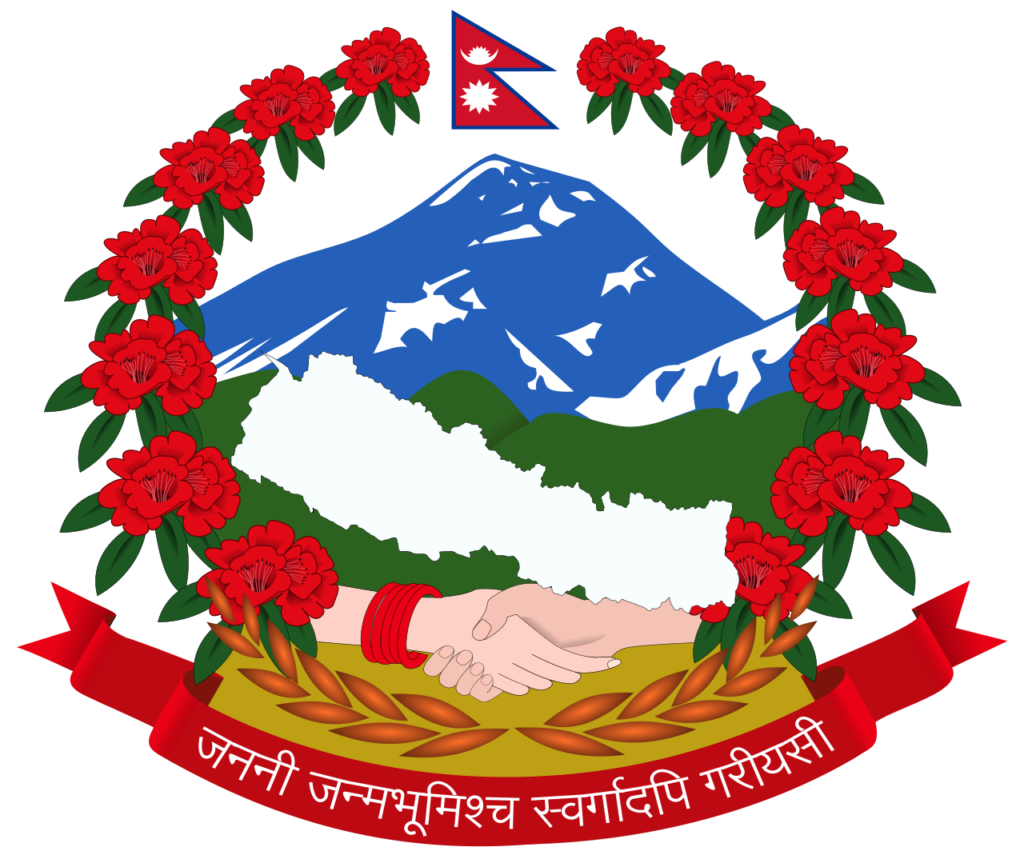
The emblem is a testament to Nepal’s identity, encapsulating various aspects of its exceptional landscape, social values, and patriotic spirit. Its components include:
- Mount Everest: Central to the emblem, representing Nepal’s iconic natural wonder.
- Green Hills: Encircling Mount Everest, depicting the nation’s hilly terrain.
- Yellow Color: Symbolizing the fertility of the Terai region.
- Male and Female Hands: A gesture signifying gender equality.
- Garland of Rhododendron: Surrounding the emblem, indicative of the national flower and natural beauty.
- National Flag: Incorporated within, affirming Nepal’s sovereignty.
- Red Scroll with National Motto: Bearing the Sanskrit phrase, “Mother and Motherland are greater than Heaven,” this element reflects the Nepalese people’s deep-seated cultural values and patriotism.
This emblem, especially with its 2020 revision to include Nepal’s territorial claims, represents a dynamic symbol of the nation’s evolving identity and aspirations.
Historical Evolution and the Meaning Behind Changes
The flag of Nepal has a rich history of evolution, reflecting the nation’s transformation over centuries. Originally, different flags were used, often influenced by Hindu religious symbols and varying colors and designs.

The transition to the double pennant design, a notable characteristic of the current flag, is attributed to the unification of Nepal under Prithvi Narayan Shah in the 18th century.
Earlier versions of the flag included different colors and designs, indicating the diverse cultural and political landscape of Nepal’s past. The most significant change came in 1962 with adopting a new constitution.
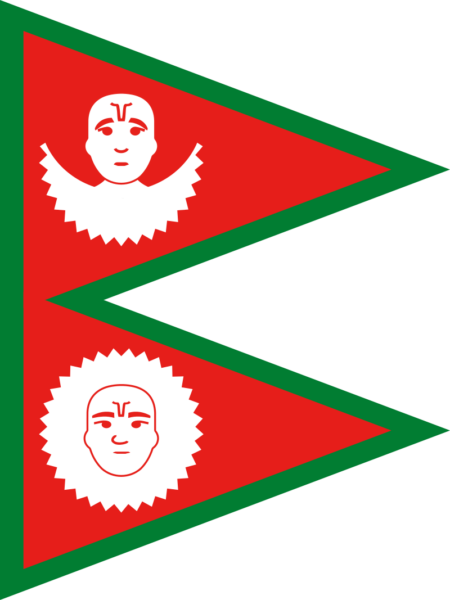
This era saw the modernization of the flag, particularly the removal of human faces from the sun and moon symbols, which was a move towards a more secular and contemporary national emblem.
The flag’s current form, adopted formally in 1962, has maintained its basic elements consistently, symbolizing the nation’s enduring nature and the timeless qualities of the natural world.
This evolution from various historical flags to the present design illustrates Nepal’s journey through different political and cultural phases, embodying its heritage and continuous progression.
Overall Symbolic Meaning of the Flag
The flag of Nepal symbolizes the nation’s enduring spirit and rich cultural roots. Its distinctive non-rectangular shape, a departure from standard flag designs, reflects Nepal’s character and historical traditions. The inclusion of celestial symbols – the sun and moon – signifies the country’s aspirations for longevity and continuity, echoing the timeless nature of these elements.
Similar Flags to the Flag of Nepal
Let’s explore flags similar to Nepal’s that share a few thematic elements or symbolic connections with this unique banner.
Vatican City
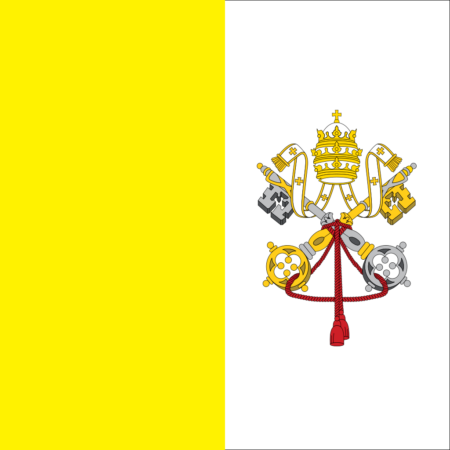
The flag of Vatican City, like Nepal’s, breaks away from the conventional rectangular flag design. It features a unique square shape with two vertical bands, a distinctive characteristic that sets it apart from national flags.
Although Vatican City’s flag’s symbolism and design elements differ from Nepal’s, its departure from the standard flag shape reflects a similar boldness in embracing a distinctive national identity through flag design.
Panama
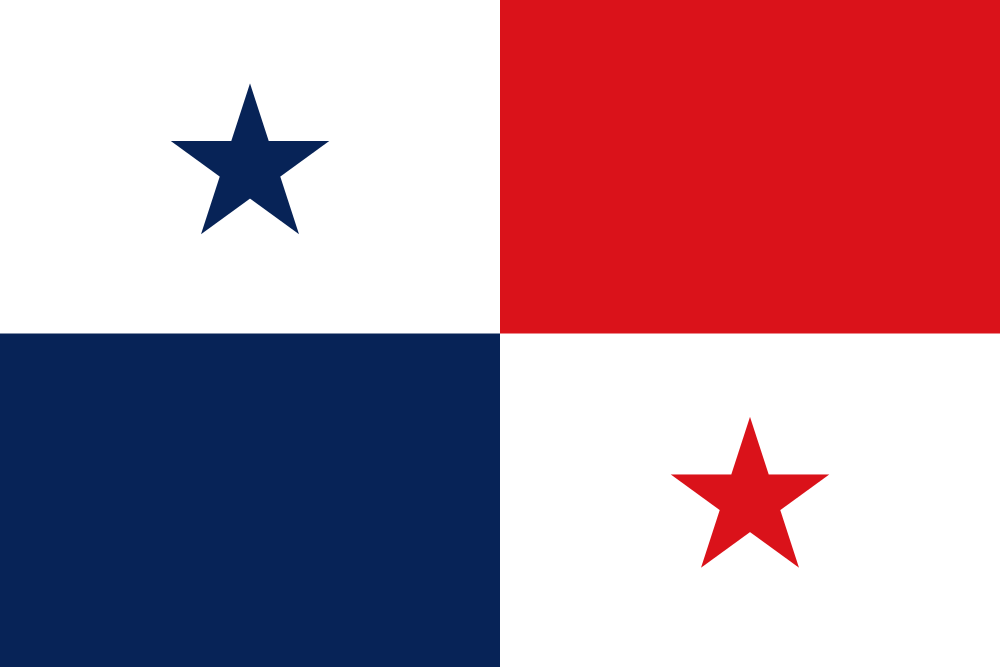
While rectangular, the flag of Panama is similar to Nepal’s flag in its use of distinct geometric shapes and space division.
Panama’s flag features a quartered design with stars and solid colors, indicating a blend of elements within a unified whole, akin to the symbolic integration seen in Nepal’s flag.
Final Thoughts
The Nepalese flag, distinguished by its one-of-a-kind design and meaningful color palette, occupies a special niche within the global array of flags, underscoring Nepal’s rich heritage and unity. For the citizens of Nepal, it is a source of national pride and a vivid representation of their enduring spirit and rich cultural legacy.
Image Sources and Copyright Information
- Nepali Flag with Himalayan Mountains in the Background: © suphanat/Shutterstock